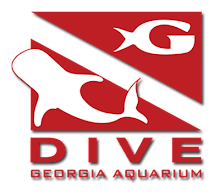During freediving training, staff divers are taught comfort and breath holding abilities, understanding of the history, physics, physiology and psychological factors that are involved in freediving. There are three main disciplines in freediving which include pool, depth, and recreational.
Pool disciplines are mainly used for apnea practices that include extended periods of time and distance. These disciplines are known as static apnea and dynamic apnea. Static apnea is the practice of timed breath holding. The world record for men's static apnea is held by France's Stephanie Mifsud, with a time of 11 minutes and 35 seconds, while Russia's Natalia Molchanova holds the world record for the women with a time of 8 minutes and 23 seconds. (More freediving world records can be found here. ) Dynamic apnea is achieved by swimming horizontal without contact of the surface or floor and has two categories of swimming with fins or without them.
Depth disciplines include constant weight apnea, free immersion apnea, variable weight apnea, and no limits. In constant weight apnea the diver has to dive to a depth following a guide line that he or she is not allowed to actively use during the dive while maintaining the same diving weights during the dive, whereas in variable weight apnea divers are allowed to use a weighted sled for descent and are able to return to the surface by pulling themselves up along a line. Freedivers partaking in free immersion apnea use a vertical guide rope to pull themselves down to a depth and also return to the surface. No limits freediving allows the diver to use any means of breath-holding and any type of equipment to dive to certain depths as long as a guide line us used. Recreational diving is among the most popular which includes snorkeling and spearfishing.
The different type of equipment used for freediving depends on the type of discipline a diver decides to do and the preference of the diver. There are many brands of wetsuits and fins which allow for maximum stream line capabilities. The most common difference from diver to diver is the type of fins used. Freediving fins are not the traditional short and stiff SCUBA fins, they are more flexible and longer allowing for more thrust while expending less energy when swimming. There is also the choice of a monofin which has only a single attachment for both feet and allows for the diver to do a dolphin like kick while swimming.
 At the Georgia Aquarium freediving is mainly used by DIP in order to capture unique video footage of guests participating in the "Journey with Gentle Giants" program. It is also the dive mode for field operations such as Sea Nettle collections.
At the Georgia Aquarium freediving is mainly used by DIP in order to capture unique video footage of guests participating in the "Journey with Gentle Giants" program. It is also the dive mode for field operations such as Sea Nettle collections.
While freediving may sound like "just holding your breath", like any other type of diving there are hazards that are involved. Believe it or not, the most important part about holding your breath is learning how to properly breathe before and after each dive. In a classroom session, Jessup taught various breathing techniques, safety procedures, and pre-dive warm-ups that ensure safe and longer diving experiences.
After being briefed the divers got a chance to execute their newly learned skills in the Ocean Voyager exhibit. Fine tuning freediving breathing techniques is difficult enough on land, so upon entering the water these breathing techniques were put to use. From there everyone practiced rescuing their dive buddy in a simulated dive emergency. With the completion of the technical and safety aspects it was time to experience what freediving has to offer. Diving to a depth of 30 ft with whale sharks gliding by a giant manta rays buzzing overhead it was easy to see why freediving has become so popular in recent years.
The different type of equipment used for freediving depends on the type of discipline a diver decides to do and the preference of the diver. There are many brands of wetsuits and fins which allow for maximum stream line capabilities. The most common difference from diver to diver is the type of fins used. Freediving fins are not the traditional short and stiff SCUBA fins, they are more flexible and longer allowing for more thrust while expending less energy when swimming. There is also the choice of a monofin which has only a single attachment for both feet and allows for the diver to do a dolphin like kick while swimming.
While freediving may sound like "just holding your breath", like any other type of diving there are hazards that are involved. Believe it or not, the most important part about holding your breath is learning how to properly breathe before and after each dive. In a classroom session, Jessup taught various breathing techniques, safety procedures, and pre-dive warm-ups that ensure safe and longer diving experiences.
After being briefed the divers got a chance to execute their newly learned skills in the Ocean Voyager exhibit. Fine tuning freediving breathing techniques is difficult enough on land, so upon entering the water these breathing techniques were put to use. From there everyone practiced rescuing their dive buddy in a simulated dive emergency. With the completion of the technical and safety aspects it was time to experience what freediving has to offer. Diving to a depth of 30 ft with whale sharks gliding by a giant manta rays buzzing overhead it was easy to see why freediving has become so popular in recent years.


Loved reading your site. I love to enjoy diving. PADI is what I feel best PADI Scuba Lesson is what I am subscribed with.
ReplyDeleteThank you so much for sharing this post.
ReplyDelete